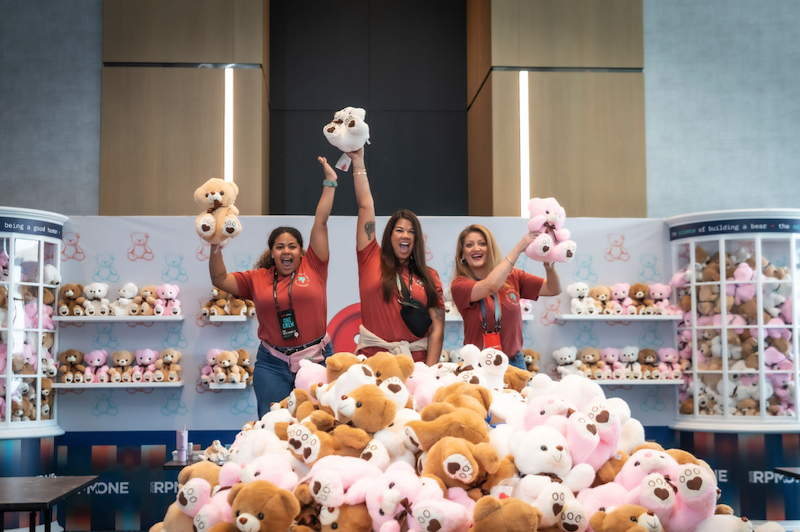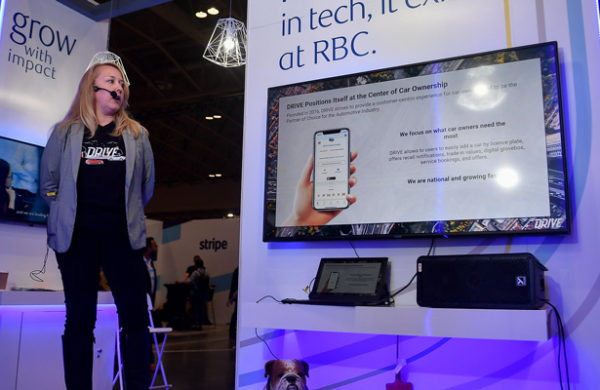
You’re standing at the back of the room, watching employees laugh, connect, and lean into breakout sessions. It feels like a success. But, as every planner knows, when leadership asks, “What did we take away from this?” you need more than good vibes to answer.
Internal events are more critical than ever, especially as hybrid work reshapes how teams connect. According to a Harris Poll and Freeman study, 73% of professionals want their employers to increase investment in live, in-person experiences. But with rising expectations and tighter budgets, leadership needs proof of value.
That’s where measuring both Return on Investment (ROI) and Return on Experience (ROE) comes in. Lauren Reeves, COO at Meeting Tomorrow, has helped hundreds of companies capture both hard numbers and human impact. Her mantra: You won’t have the impact you’re hoping for if you don’t define it upfront.
In this guide, you’ll learn how to define success upfront, gather meaningful data, and present insights that inspire leadership for continued investment in internal events.
Why ROI and ROE Matter for Internal Events
ROI shows the financial and operational return on your spend, while ROE captures emotional, cultural, and human connection outcomes. Internal events often prioritize connection, morale, and clarity. And ROE gives those outcomes weight in a way that traditional financial metrics miss.
Together, ROI and ROE help you justify the investment and improve future planning. We’ve worked with companies that transformed their event strategy simply by proving both financial returns and cultural impact. When leadership sees clear data about how events drive retention, productivity, and alignment, they stop viewing them as nice-to-haves and start treating them as strategic tools.
The most successful internal events we’ve produced have clear measurement frameworks built in from day one. These companies design their events to deliver specific, trackable outcomes.
The Challenges of Measuring Event ROI & ROE
Internal events deliver significant emotional value, but that’s often the hardest kind to measure. Without upfront clarity, planners struggle to tie outcomes to business results, leaving them with anecdotes when leadership wants data.
Intangible Outcomes Are Hard to Quantify
Culture, morale, alignment, and trust don’t come with dashboards or automatic reporting. ROE metrics require a mix of creativity and context to capture meaningful insights.
We see this challenge repeatedly: event planners know their team-building session created genuine connections, but translating that feeling into measurable impact takes intentional planning and creative data collection approaches.
Vague Goals from Stakeholders
Executives may say, “We want more engagement,” but what does that look like in practice? We recommend asking questions to define “connection” or “culture” in measurable terms before planning begins.
Lauren puts it perfectly: “The most important factor is being as clear as you possibly can be about the outcomes you want.” This clarity becomes your measurement foundation. Without it, even the most powerful events struggle to demonstrate their value to leadership.
Outcomes Don’t Always Tie Easily to Business Impact
You know the event was powerful, but how do you show it improved retention or alignment? Without thoughtful framing, your ROI story gets lost in anecdotes rather than driving strategic decisions.
We help clients connect event outcomes to broader business metrics. For example:
- Did your leadership alignment session reduce decision-making time?
- Did cross-team relationship building lead to faster project completion?
- Did manager training correlate with improved engagement scores on the next pulse survey?
- Did a focus on company values show up in more consistent customer feedback?
These connections require planning, but they make your impact story much stronger.
You Can’t Measure What You Don’t Plan
ROI and ROE must be baked into the strategy, not bolted on afterward. Start with measurement in mind from the very first planning session. The companies that get the best data from their events are the ones that design measurement frameworks before they book venues or plan agendas.
Build ROI and ROE Into the Blueprint
Ask stakeholders: “What does success look like, both emotionally and operationally?” Tie goals to broader company objectives like rebuilding trust, aligning on strategy, or improving cross-team collaboration.
We use our comprehensive event planning process to help clients define these goals upfront, creating measurement frameworks that capture both hard data and human impact.
Examples of Tangible ROI Goals
Events and offsites are most impactful when their goals tie clearly to business outcomes. Instead of vague intentions like “improve culture,” aim for specific outcomes that can be measured. For example:
- Increase cross-functional collaboration by designing structured networking opportunities and shared project work.
→ Measure impact through faster project delivery, reduced silos, or increased cross-team initiatives.
- Shorten onboarding time by helping new hires build early peer relationships and gain a deeper understanding of company culture.
→ Track through time-to-productivity, engagement scores, or manager satisfaction.
- Strengthen alignment around a product launch with consistent messaging, hands-on exercises, and role-specific training.
→ Evaluate using message recall, readiness surveys, or execution consistency.
These types of goals not only guide better event design—they also create a direct line between your investment and meaningful business results.
Examples of Intangible ROE Goals
Rebuild morale by creating positive shared experiences and open communication opportunities. Foster cross-team relationships that improve daily work collaboration and reduce silos. Help hybrid employees feel connected to culture through in-person touchpoints and relationship building.
Lauren emphasizes the importance of specificity: “The goal might be connection, but what does that actually mean? Deep relationships? Cross-team collaboration? You have to hone in on specifics.”
These detailed definitions transform vague aspirations into measurable outcomes, giving you clear targets to track and evaluate.
Creative Tactics for Collecting ROI and ROE Data
To truly understand the impact of an event, it’s important to combine both quantitative and qualitative data. This means moving beyond standard post-event surveys and gathering real-time feedback throughout the experience.
Mid-event pulse checks, session engagement metrics, and even emotion-driven prompts can help capture insights while they’re still fresh. Open-ended questions about connection, clarity, and energy often reveal dimensions of impact that hard metrics miss.
Lauren emphasizes the value of intentional design in the data collection process: “You may need to get creative with surveys—use push notifications, embed them into experiences, or incentivize completion.”
Successful events could use photo-based feedback tools and gamified surveys that blend naturally into the event environment, making data collection feel like part of the experience rather than a separate task. This proactive, in-the-moment approach ensures you’re capturing feedback that’s more authentic, actionable, and aligned with your broader business goals.
Smart ROI Metrics to Track
Tracking return on investment starts with clear indicators of participation and follow-through. Metrics like session attendance, drop-off rates, and replay views help reveal which content resonated and where attention waned.
But the real value comes from what happens after the event. Monitor follow-up actions such as platform logins, increased retention, or adoption of tools and processes introduced during the experience. Strategy comprehension can also be measured directly through pulse surveys, alignment scores, or quick quizzes to assess message clarity and buy-in.
These indicators provide tangible links between your event and business outcomes.
Smart ROE Metrics to Track
Return on experience is more nuanced, but just as measurable.
Peer-to-peer interactions can be captured through live polls, shout-outs, shared photos, and even organic networking data. Emotional responses (an often overlooked signal of event success) can be surfaced through sentiment scores and qualitative feedback.
Digital engagement post-event also speaks volumes.
Monitoring activity on Slack, intranet platforms, or shared workspaces reveals whether the energy and connection from the event continue beyond the closing session. These human-centered metrics help tell a more complete story: one that balances operational impact with cultural momentum and emotional resonance, both of which are key drivers of long-term performance.
Turn Your Data Into a Story Leadership Gets
Raw data rarely speaks for itself, especially when it comes to experiences. To make your insights resonate with senior leaders, frame them as a clear, compelling story.
Start with an executive summary that surfaces the biggest wins, notable shifts, and memorable moments. Then layer in visuals (photos, short videos, and direct quotes) that illustrate emotional engagement and human impact.
Structure your report like a case study:
Objective → Action → Outcome (ROI) → Emotional Impact (ROE)
Make the intangible feel real and persuasive.
“Once you have the data, it’s an exercise in how to present it in a compelling way. The key is telling the story of the event with that data in mind,” Lauren describes.
Your measurement framework becomes the foundation for compelling narratives that demonstrate both financial returns and human impact to stakeholders.
We recommend creating visual reports that combine hard metrics with human stories. Show attendance numbers alongside employee quotes. Present collaboration improvements next to photos of cross-team interactions.
For example, event organizers might use pre- and post-event surveys to capture shifts in trust, morale, or strategic clarity. Thoughtfully designed data collection can reveal not just measurable improvements, but also qualitative insights about emotional recovery and renewed connection to company values.
This approach helps leadership understand both the business case and the cultural impact.
Measuring ROI Shapes Your Company’s Next Event
When you measure both ROI and ROE, you gain a clear view of what actually made your event a success (or not). You’ll gain a deeper understanding of what drove alignment, improved retention, or derailed your entire strategy.
Specific goals, consistent metrics, and a mix of qualitative and quantitative insights help your team refine execution. You can identify what sessions delivered the most value, which teams need more connection, and how to improve retention.
This data tells the story of your internal event and actively shapes your company’s event culture.
Want to get strategic about your next internal event? Connect with the team at Meeting Tomorrow to start planning with ROI and ROE in mind.
Frequently Asked Questions About Event ROI and ROE
What is the ROI methodology of events?
It starts with defining what “success” looks like for your event, both in numbers and in impact. From there, ROI means comparing what you spent to the business value you created, like leads, retention, or alignment. The key is to plan for measurement from the very beginning.
What is the best way to measure ROI?
Tie every goal to a business outcome. Track metrics like attendance, engagement, follow-up actions, and post-event behavior. Then compare those results against your budget and resources. The most effective teams also layer in qualitative feedback to capture emotional impact and team alignment.
What is the average ROI for event marketing?
It varies by industry, but research usually cites returns between 3:1 and 5:1. This means that for every dollar spent, you can expect a value of $3–$5. But averages only go so far. Your ROI improves dramatically when you align your event with clear business goals from the start.



